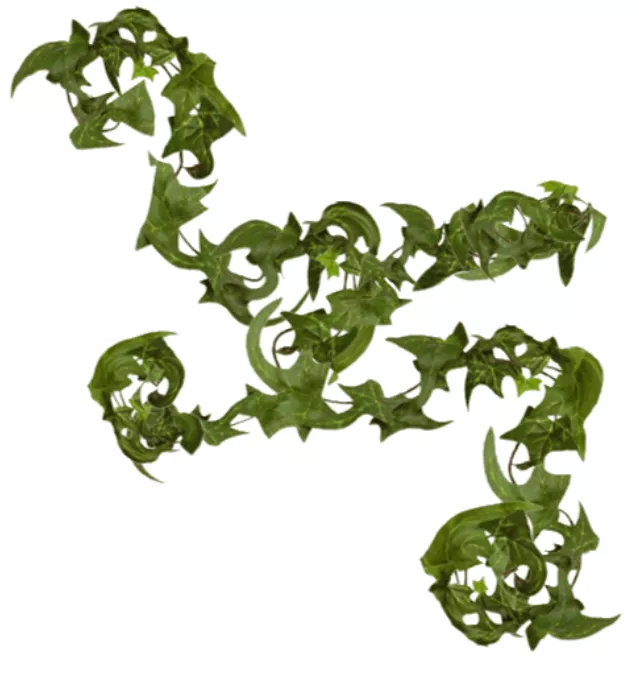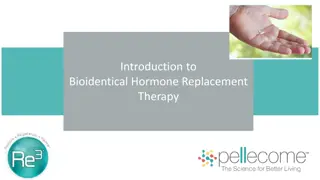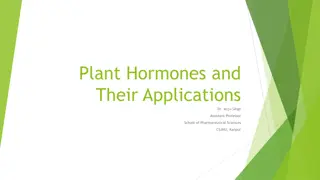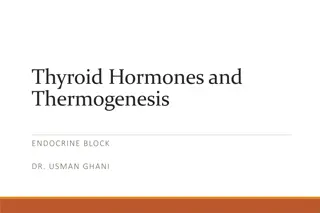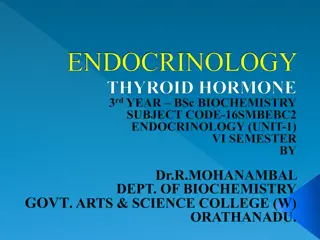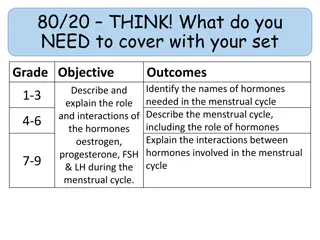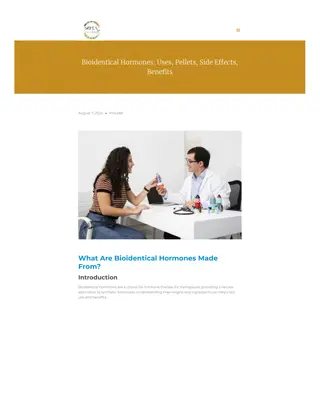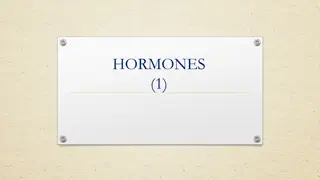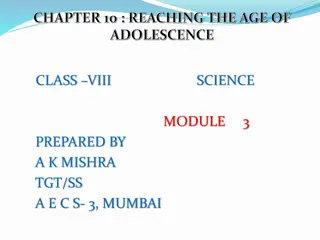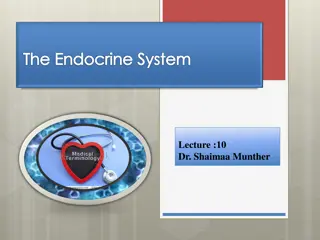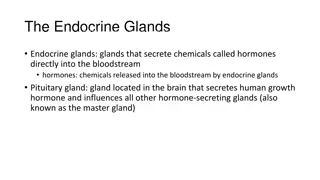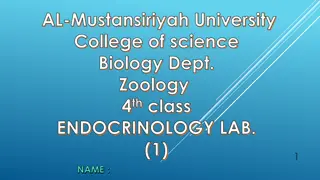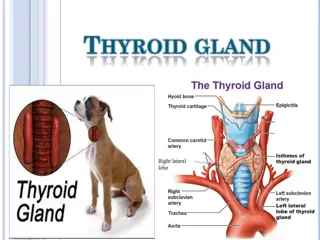Understanding Plant Hormones and Their Role in Growth and Development
Plant hormones are essential chemicals that enable plants to respond to environmental stimuli, regulate growth processes like cell division and elongation, and control key developmental stages such as flowering and fruit development. Key hormones include auxin, gibberellins, and abscisic acid, each with specific functions and sources within the plant. They play vital roles in stem elongation, root growth, seed germination, and fruit development. Understanding these hormones is crucial for optimizing plant growth and development in agriculture and horticulture practices.
Download Presentation

Please find below an Image/Link to download the presentation.
The content on the website is provided AS IS for your information and personal use only. It may not be sold, licensed, or shared on other websites without obtaining consent from the author. Download presentation by click this link. If you encounter any issues during the download, it is possible that the publisher has removed the file from their server.
E N D
Presentation Transcript
Plant Hormones - Responding to Stimuli
Chemicals that are made in one part of an organism, but affect another part of the organism Allows a plant to respond to some stimulus in the environment Allows it to bloom at an appropriate time Allows it to grow toward a light source Allows a seed to germinate at the appropriate time Etc.,
Hormones-Organic compounds that occur in low amount and act as chemical messengers. Usually synthesized in one part of the plant and transported to the another part where it causes a physiological reaction They influence cell differentiation, cell elongation and cell division
auxin gibberellins abscisic acid
Produced in the terminal buds of the stems(apical meristem) Moves downwards in the phloem, from the growing point to the rest of the plant Small amounts produced in growth points of roots, most produced in growth point of stem.
Stimulate: Cell division Cell elongation (growth in stem length)( The development of fruit The abscission of leaves and fruit The development of adventitious root in stem cuttings Tropic movement in stem and roots apical dominance it suppress the growth of the lateral buds.
Gibberellins are one of the largest groups of plant hormones and occur mainly in the terminal buds of stems and roots, in young leaves and in embryos
Stimulate: Stem elongation Root growth The germination of seeds Promotes flowering Stimulate: plump grapes in grocery stores have been treated with gibberellin hormones while on the vine
It is a growth inhibitor that counteract the actions of auxins. It occurs in leaves, stems and unripe fruit
Accelerate abscission in leaves and fruit. ABA is produced in ripe fruit and induced fruit fall. ABA stimulates the closing of stomata in most plant species. Its synthesis is stimulated by water deficiency (water stress) Abscisic acid; Causes dormancy in apical and lateral buds in winter. Controls seed dormancy by inhibiting germination Causes the closing of stomata when the plant wilts
Is a growth movement of part of the a plant in response to an external onE sided stimulus. Direction of the growth is determined by the direction of the stimulus A growth movement in the direction of the stimulus is a positive reaction A growth movement away for the stimulus is a negative reaction Tropism takes place as a result of the unequal distribution of auxins in the plant. Certain plant part grow faster than others High auxin concentration in the stems stimulates growth High auxin concentration in the roots inhibits growth.
Phototropism Movement of plant toward a light stimulus
Auxin associated with phototropism - early experiments demonstrate tip as receptor.
Experiment to illustrate geotropism Roots growth downwards
Apical domination is a phenomenon where the terminal bud suppress the development of lateral buds
The apical bud( tip of the main shoot) of most plants grow more vigorously/faster then the lateral buds( tips of the side branches) below it The plant therefore, grows vertically and the growth of the side branches is inhibited This is called Apical dominance. It is caused by the production of auxins in the apical buds. These auxins move down to the lateral buds and inhibits there growth
When the apical bud is removed, the controlling influence of the apical bud over the growth of the lateral buds is removed The lateral branches grow out
Plant hormones are used extensively in the production of food crops. It Includes the following: Root formation from cuttings Production of seedless fruit Ripening of fruit Prevention of premature abscission of fruit Increase in fruit size Stimulation of germination Weed control
Use of gibberellins 2 Gibberellin induces growth in grapes. The bunch on the left is an untreated control. The bunch on the right was sprayed with GA3 during fruit development.
Auxins as herbicides Auxins accelerate the metabolism of broad-leaved dicotyledonous weed and therefore stimulate growth These weeds grow so fast that their water absorption and food production are insufficient. The plants weaken and die. http://plantandsoil.unl.edu/croptechnology2005/UserFiles/Image/siteImages/GrowthRegSMALL.jpg http://plantandsoil.unl.edu/croptechnology2005/UserFiles/Image/siteImages/GrowthRegulatorsbinjurySMALL.jpg
Use of gibberellins to http://www.biyolojiegitim.yyu.edu.tr/k/Gib/images/Gibberellin_jpg.jpg stimulate seed germination In this experiment carried out on germinating barley seeds, the results showed that the release of gibberellin from the embryo, triggers the germination
Plants respond to the direction and amount receive. The seedlings on the left grew toward the light it received on only one side. The plant in the center received no light. The plant on the right was grown in normal, all-around light of light they

 undefined
undefined
